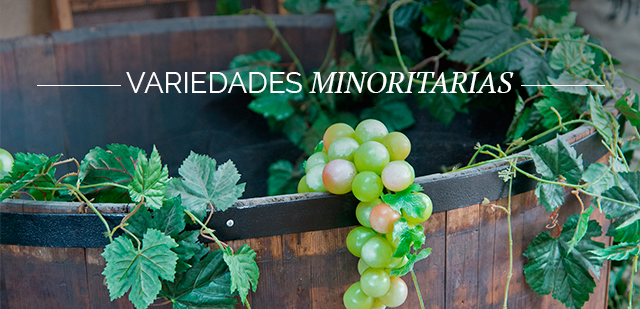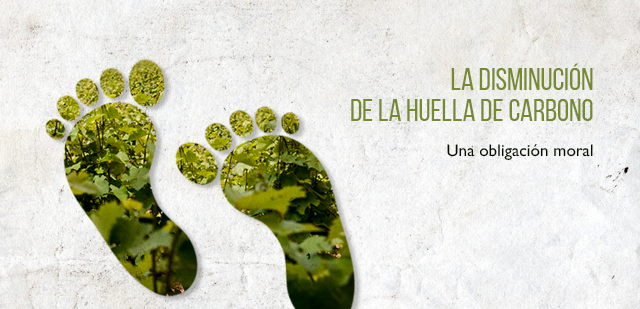BIODIVERSITY IN THE VINEYARD

We live off the earth, which means our greatest asset is a living, breathing thing. This is why we strive to improve biodiversity and manage our land in a way that respects existing ecosystems where even the tiniest living organism plays a role in the cycle of life and especially that of the vine.
Under the umbrella of the ambitious Torres & Earth program, various projects address the need for managing and respecting biodiversity. They cover areas ranging from the protection of wildlife and its natural habitat to soil fertilization systems. Júlia Muntané, part of the team responsible for these studies, explains it further:
What are the most important biodiversity projects you are currently working on?
We try to minimize our environmental impact in our vineyards through different actions and best practices that encourage biodiversity on our land. We apply preventive phytosanitary treatments using environmentally friendly products.
In terms of weed control, we have substituted conventional weed killers with mechanical removal or cultural control. Growing cover crops between vine rows decreases erosion, increases organic matter and improves biodiversity, because the cover itself becomes a natural habitat for several beneficial species.
We apply a reasonable fertilization regime in accordance with the principles of conservation agriculture. We use natural fertilizers as a source of nitrogen and potassium sulfate as a source of potassium, limiting both to the minimum amount necessary.
In addition, we use satellite imagery to map all of our vineyard plots. This allows us to define and differentiate plant vigor in very specific areas. It is best to apply the precise amount of fertilizer needed at the right time and place to prevent unsustainable use.
We should expect irrigation to increase steadily in the vineyard. Predictions of rising temperature and sudden heat waves during certain periods of the growth cycle present a potential risk for the development of the vines and the quality of future harvests.
This is why we are working to restore old wells and shafts, as well as building harvesting ponds at all of our estates. So that wildlife can take full advantage of these water sources, we install water dispensers for birds and amphibians and safety measures to prevent accidents.
We recently invested in the purchase of 10 hectares of holm oak forest of high ecological value in Conca de Tremp. We acquired the site to prevent its use as a quarry, which would have resulted in the destruction of its ecosystem. The area is characterized by a landscape of unique contrasts with different types of flora and fauna that help enhance its richness and diversity.
We introduced a floating platform in the pond at the Wine Center in Pacs del Penedès to attract moorhens and other bird species. Thanks to this initiative, a pair of moorhens mated on the platform and had six chicks last summer.
Preventing soil erosion is key to maintaining biodiversity. When planting our vines we select the orientation with the lowest possible slope. Where the terrain makes this impossible, we plant the vines along contour lines. The goal is always to minimize soil erosion caused by rainfall that exceeds the absorption capacity of the ground.
Reforesting the slopes improves their structural integrity due to the stabilizing influence of the plants. Furthermore, drainage channels prevent heavy rainfall from flooding the vineyards and washing away the soil.
The great majority of our forests have a Technical Forest Management and Improvement Plan. Every year, we carry out tasks like clearing vegetation to reduce the risk of fire, felling trees to improve the productivity of the forest, extracting biomass as a source of energy or reforesting deteriorated areas.
Maintaining forested areas between the vineyards creates a mosaic landscape, which provides greater heterogeneity and improves biodiversity thanks to the benefits of the forest as a wildlife habitat.
How much of an influence does a healthy ecosystem have on the vine and the quality of its fruit?
Different species of flora and fauna coexist in a healthy ecosystem, and every species does its part to keep it balanced. It is easier to maintain this balance in a healthy rather than deteriorated ecosystem. The quality of the vineyard ecosystem determines whether there are enough insects to properly pollinate the vines.
In a healthy vineyard, we also find birds that are insectivores or insects that eat other insects, which provide a natural form of pest control. In turn, the presence of insects attracts animals that eat insects, like reptiles or amphibians, as well as small mammels, and thus the food chain grows. The Bonelli's eagle is a good bioindicator of vineyard quality. At Torres we have carried out studies to identify this species as well as projects aimed at its protection. In short, the quality of the ecosystem is essential to the vines' survival.
What do you imagine the Penedès will look like in 20 years? Are you concerned about changes that could affect grape ripening or a drastic transformation of the varietal map due to climate change?
By now it is a well-known fact that we are in the middle of a climate change period. At Torres we have always treated the environment as a priority, but climate change has heightened our concern.
Vitis vinifera is a plant that is extremely sensitive to changes in temperature. Over the past 40 years, Torres has witnessed a one-degree increase in the average temperature in the Penedès, which has pushed the harvest forward by approximately ten days compared to two decades ago. This leads us to the conclusion that we will see changes, which are already starting to make their presence felt, such as long periods of drought in our region like we saw in the Penedès this summer. We will also see extreme climate events such as torrential rains in other parts of the world.
As temperatures rise, it will become necessary to work with varieties that are more heat resistant and require less water. In light of these climatic circumstances, the project to recover ancestral varieties is particularly interesting, because some of those found are resistant to high temperatures and drought. This perspective is informing our work and research, which is increasingly focused on adapting winegrowing practices to the changing climate reality.
What challenges lie ahead in the immediate future?
The challenge for Torres is to keep researching the current and future effects of climate change on the vineyard in order to adapt successfully. To this end, we have invested over 11 million euros in climate change related projects since 2008; every year 11% of the winery's total investments go toward funding these types of projects.



